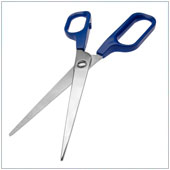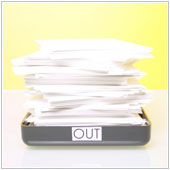 Presentations containing charts and graphs are a part of every business - some managers give presentations on a daily or weekly basis, while others do it once in a blue moon. The tool most business owners use to create and deliver presentations is Microsoft's PowerPoint. While PowerPoint is great, it isn't exactly easy to put a chart or graph into any presentation, or is it?
Presentations containing charts and graphs are a part of every business - some managers give presentations on a daily or weekly basis, while others do it once in a blue moon. The tool most business owners use to create and deliver presentations is Microsoft's PowerPoint. While PowerPoint is great, it isn't exactly easy to put a chart or graph into any presentation, or is it?
Here's how you can take data from spreadsheets in Excel and turn it into graphs and charts in PowerPoint.
Before you start
Before you can transfer data from Excel, you should take a look at the spreadsheet. If you have a ton of data and only want to take a certain chunk to make your graph, it would be best to copy and paste it into a new Excel workbook. This way, you can get the data from Excel to PowerPoint easily and turn into a graph or chart.
The key idea here is that you don't want to do a data-dump - putting every single number, most of which could be useless - into a slide. You want to take only the most relevant information from the spreadsheet. It's easiest to do this on a slide-by-slide basis, after you have setup the presentation outline. Copy the information only pertaining to that one slide. If you're not sure whether it will be useful or not, it likely isn't, so don't take it.
Create the graph/chart
Once you have only the data you are going to need for the chart, you can switch over to PowerPoint and go to the slide where you will put the chart. This can be done by:
- Clicking on the slide's body field - where you enter the main text of the slide, below the title.
- Selecting the Insert tab from the top of the screen and clicking on Insert Chart. Note: This will only work if the slide's layout supports Content. To change the layout of the slide, right-click on it and select Layout, then pick one that says Content.
- Choosing the type of graph that's relevant to your data from the window that pops up and pressing OK.
- Deleting the information in the dummy Excel spreadsheet that comes up by left-clicking and dragging over the content. It will be highlighted and pressing Delete will get rid of it.
- Copying and pasting the information from the Excel spreadsheet you setup earlier into the window in PowerPoint. Be sure to click on A1 before you paste it.
- Renaming the chart by double-clicking on the title above the cells.
You can click back to the slide to look at the chart. Often times the data will be opposite. For example, the date will show on the X axis, when it should be on the Y. If you click on the chart, and select Switch Row/Column in the ribbon above the slide, you will be able to re-arrange the information.
Time to format
It's highly unlikely that the graph you placed into the slide is formatted the way you want, or even optimized for your audience. Here are four tips to help you format it so it not only looks good, but can be seen when you give your presentation.
- Don't get too flashy - Yes, there are a large number and variety of charts available. No, they are not all good for presentations. It's best to pick a simple layout - stick with the classics: Pie, Bar and Line. Don't pick 3-D charts as they are hard to read and can confuse the audience. Also pick colors that can be seen. For example, light green, yellow, grey, etc. can hardly be seen on most projectors.
- Use big text - It may look big enough on your screen, but you can be sure it isn't going to be big enough for your audience. Use the biggest font size possible, and limit any explanation text.
- Remove Gridlines - But Gridlines make it easier to determine amounts don't they? Yes, on reports. But this isn't a report, it's a presentation, so it's ok to be general. Gridlines will just confuse your audience, and make graphs look cramped. Remove them by clicking on any grid line in the middle of the graph, and pressing Delete on your keyboard.
- Test it - Before you give the presentation, it would be a good idea to test the presentation on a screen that is similar to the size you will be presenting on. If that's not possible, get a colleague to look over it. They will likely be able to point some changes out - if need be.
Having attractive graphs in your presentations can go a long way in keeping your audience engaged, and it could increase the chances of your message sinking in. If you would like to learn more about how you can leverage PowerPoint or any of Microsoft's other programs in your office, please contact us today.

 Microsoft Word has been an important business tool for many years and will likely continue to be so for many more to come. There are numerous features that are used on a regular basis that, while they should make things easier, can actually create more work. One such feature is copy and paste. However, Word has some interesting copy and paste functions that can truly make your job more efficient.
Microsoft Word has been an important business tool for many years and will likely continue to be so for many more to come. There are numerous features that are used on a regular basis that, while they should make things easier, can actually create more work. One such feature is copy and paste. However, Word has some interesting copy and paste functions that can truly make your job more efficient. Email is a crucial component that many businesses have come to rely on, so much so that when the program they use has a problem the whole business is hamstrung. Many companies use Microsoft's Outlook, which does stop working from time-to-time. One of the most common issues is when your emails aren't being sent.
Email is a crucial component that many businesses have come to rely on, so much so that when the program they use has a problem the whole business is hamstrung. Many companies use Microsoft's Outlook, which does stop working from time-to-time. One of the most common issues is when your emails aren't being sent. Take a look at computers in almost every business and it's guaranteed that a large percentage of them will be running Microsoft Office. There are many different versions of Office, and Microsoft will officially release a new version of Office - 2013 - in Q1 2013, and businesses will be looking to upgrade. Those who do upgrade will undoubtedly have questions - one of the more common being how to change the default location where your documents are saved.
Take a look at computers in almost every business and it's guaranteed that a large percentage of them will be running Microsoft Office. There are many different versions of Office, and Microsoft will officially release a new version of Office - 2013 - in Q1 2013, and businesses will be looking to upgrade. Those who do upgrade will undoubtedly have questions - one of the more common being how to change the default location where your documents are saved. There are many tools in a business's arsenal that can help give it a competitive edge, or help employees be more efficient. One of these tools is Microsoft Office, as without it many companies would likely be largely inefficient and struggling to keep up with the Joneses. While it is fairly easy to use products like Excel, it can be challenging to master all it has to offer. If you have spreadsheets with a lot of data, it can be a bit of a chore to navigate, while keeping track of where you are. Luckily, there's a feature that makes it easier to keep your place.
There are many tools in a business's arsenal that can help give it a competitive edge, or help employees be more efficient. One of these tools is Microsoft Office, as without it many companies would likely be largely inefficient and struggling to keep up with the Joneses. While it is fairly easy to use products like Excel, it can be challenging to master all it has to offer. If you have spreadsheets with a lot of data, it can be a bit of a chore to navigate, while keeping track of where you are. Luckily, there's a feature that makes it easier to keep your place. One of the most important business tools is email. It allows us to stay in touch with the office and each other regardless of our location. While email is useful, it's not perfect. One issue is that we receive so many emails, with up to a 100 a day or more. This has led to many an overload and meltdown; there's just simply too many emails to get through. So, what do most people do? Delete them. However, this deletion could lead to problems.
One of the most important business tools is email. It allows us to stay in touch with the office and each other regardless of our location. While email is useful, it's not perfect. One issue is that we receive so many emails, with up to a 100 a day or more. This has led to many an overload and meltdown; there's just simply too many emails to get through. So, what do most people do? Delete them. However, this deletion could lead to problems. These past few months of 2012 have been big for Microsoft, with the officially announcement of Windows 8, two new tablets and new versions of nearly every Microsoft product. The Redmond, WA based company has indeed been busy. One of the more recent developments is a new version of Office, Office 2013 or Office 15 as the technical preview labels it. Office 2013 is promising to bring about some big changes.
These past few months of 2012 have been big for Microsoft, with the officially announcement of Windows 8, two new tablets and new versions of nearly every Microsoft product. The Redmond, WA based company has indeed been busy. One of the more recent developments is a new version of Office, Office 2013 or Office 15 as the technical preview labels it. Office 2013 is promising to bring about some big changes.
